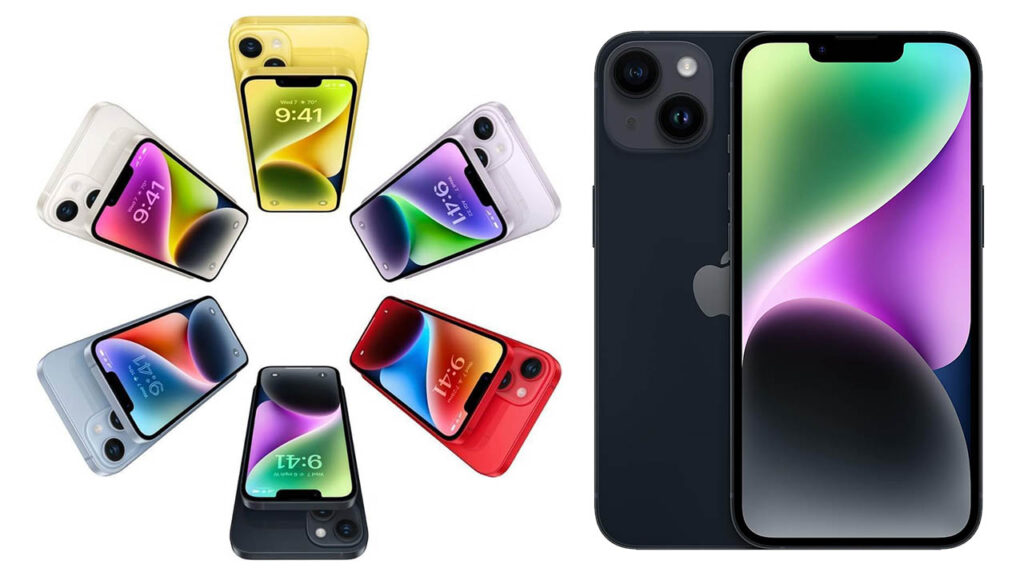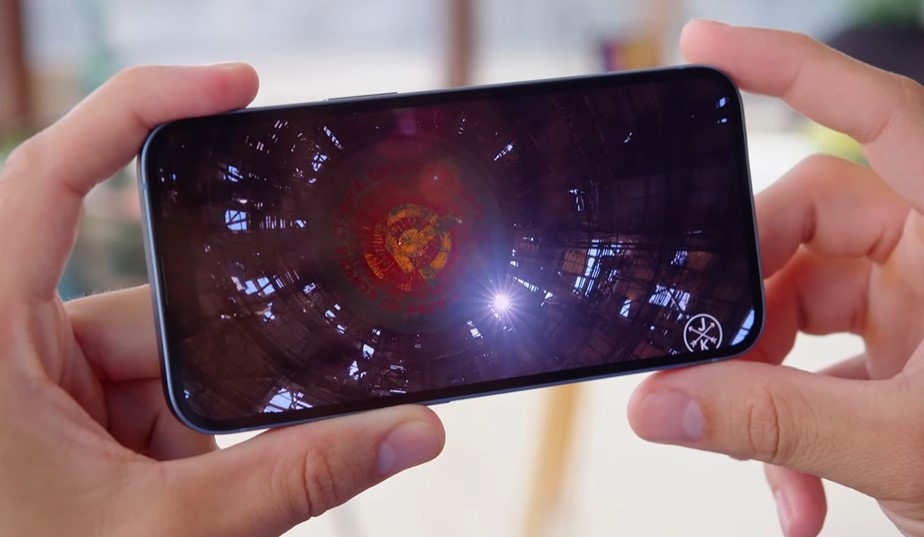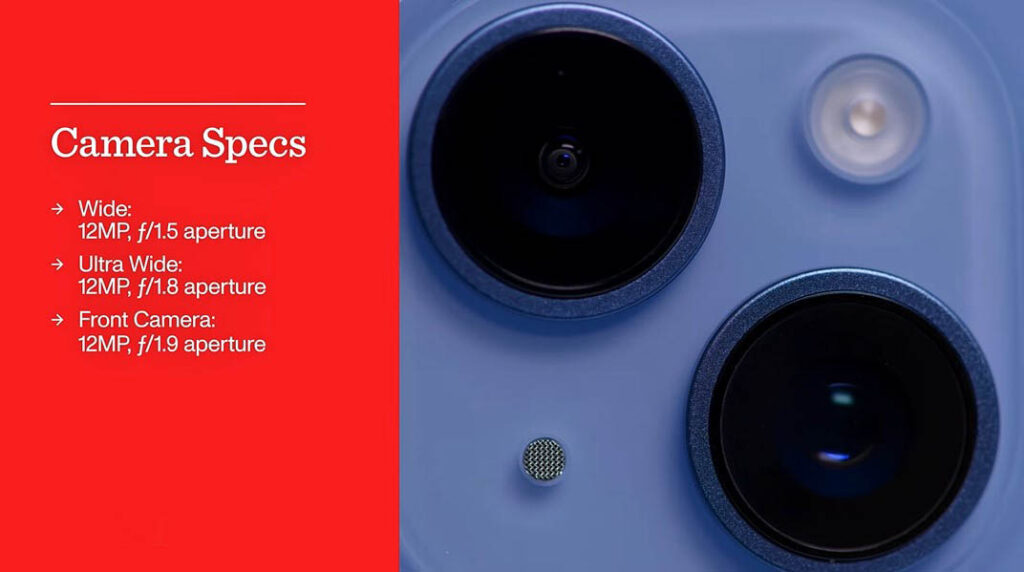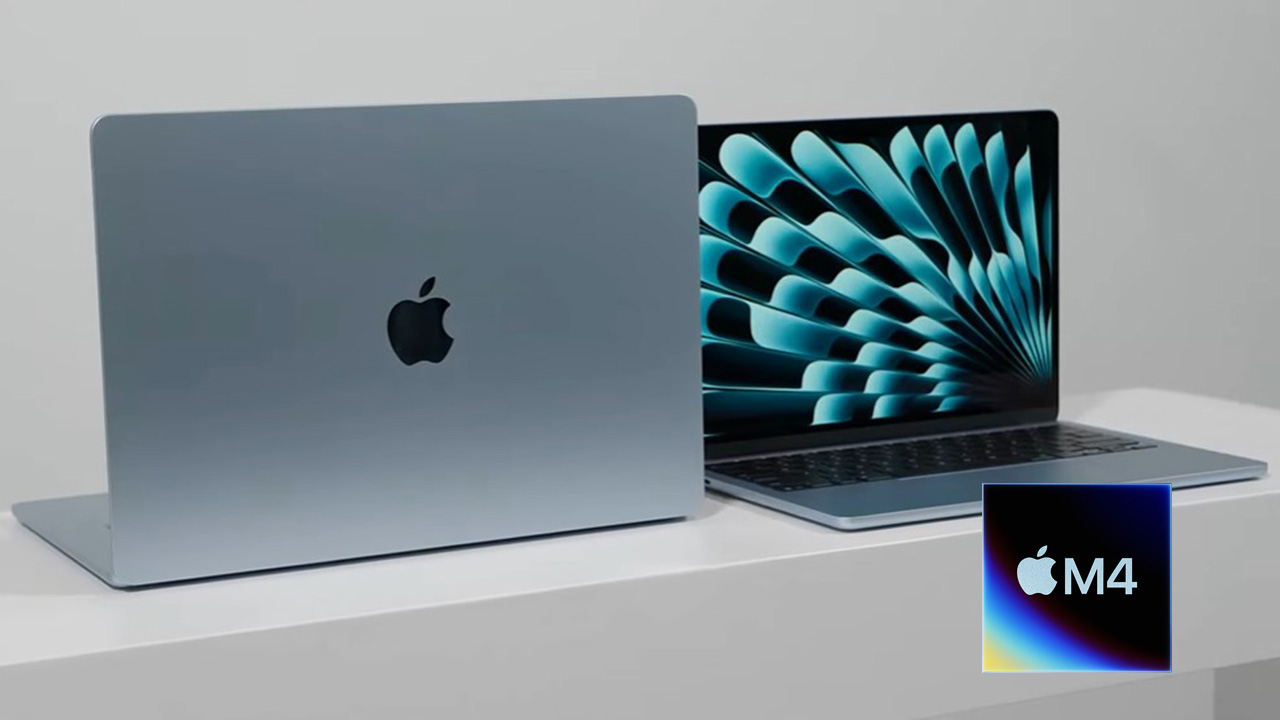iPhone 14 Review – Apple’s Best Budget Phone
It might be a bit challenging to get excited about an iPhone that seems to carry over last year’s design, display, and processor. But, stepping back from the impressive iPhone 14 Pro’s shadow, the iPhone 14 stands on its own as a solid smartphone choice, packed with some nice improvements.
While the iPhone 14 resembles the iPhone 13, it brings along some valuable under-the-hood upgrades that promise a smoother, more refined experience overall.
The dual rear camera system, with its 12MP wide and 12MP ultra-wide lenses, now has new sensors. The 12MP TrueDepth front camera also takes in more light and features autofocus for sharper, clearer selfies. All lenses are powered by Apple’s new Photonic Engine, which enhances the way images are processed by focusing on light management. Essentially, Apple has tweaked its imaging pipeline so that Deep Fusion neural engine image processing now works on uncompressed images, improving photo quality in a way that makes a real difference for detail and low-light performance.

However, if you’re hoping for a 48MP sensor with quad-pixel binning or zoom capabilities, you’ll still need to upgrade to the iPhone 14 Pro or Pro Max models.
The iPhone 14 retains Apple’s Super Retina XDR OLED display, which remains as vibrant and sharp as ever. But, if the notch isn’t your style, you might lean toward the 14 Pro or Pro Max, which feature the innovative Dynamic Island, an adaptive refresh rate, and an always-on display for added functionality.
Apple also decided to keep the iPhone 14 and 14 Plus running on the A15 Bionic chip from last year. While it’s a familiar chip, there’s a boost in graphics performance thanks to a five-core GPU – the same one found in the iPhone 13 Pro and 13 Pro Max. This upgrade should offer a noticeable performance bump over the iPhone 13’s standard A15 chip, making everyday use and gaming just a little smoother.
For all that’s unchanged, there are some cool new features, like crash detection, which recognizes when you’ve been in a car accident and can automatically notify emergency contacts and services. Similarly, the iPhone 14 can connect to emergency services via satellite, an industry first and a very welcome feature for Apple’s more affordable model.
Other useful upgrades include a new heat dissipation system that better manages temperatures, improving the phone’s overall efficiency and battery life. Battery life on the iPhone 14 should be an improvement over the iPhone 13, so it can keep up with a full day of use more comfortably. And in a nod to repairability, Apple has made the back glass easier to replace – no more swapping the entire enclosure, which should save some cost and hassle if repairs are needed.
iPhone 14 Specs
| Price | From $799 |
| Display | 6.1 inches, 2532 x 1170 pixels, 60Hz |
| CPU | A15 Bionic |
| Storage Options | 128GB, 256GB, 512GB |
| Rear Cameras | 12MP wide (f/1.5), 12MP ultrawide (f/2.4) |
| Front Camera | 12MP TrueDepth (f/1.9) |
| Water Resistance | IP68 |
| Available Colors | Midnight, Purple, Starlight, Product Red, Blue |
| Battery Life | Up to 9 hours 28 minutes (5G web surfing) |
| Dimensions | 5.78 x 2.82 x 0.31 inches |
| Weight | 6.07 ounces |
iPhone 14 Design
At first glance, it’s easy to see why the iPhone 14 could be mistaken for one of Apple’s more recent models, though it subtly holds on to a few unique design details that began to shift with the iPhone 15 series.
The iPhone 14 marks the last generation before Apple softened the iPhone’s edges and gave the entire lineup the Dynamic Island feature, which initially debuted exclusively with the iPhone 14 Pro. Compared to its successors, the iPhone 14 sports more defined, angular edges, which can feel a bit less cushioned in the hand. Its screen design also has that familiar notch—a black area at the top that many have come to recognize, while some might view it as “classic” and others as dated. This design choice means the iPhone 14 lacks the fluid, interactive pill-shaped cutout that later models introduced.
Its exterior continues the Apple tradition with a matte-textured metal frame and a clear glass back, which Apple switched out for a color-infused frosted glass on the iPhone 15 and iPhone 16. It’s a minor shift, more of an aesthetic difference that doesn’t quite impact daily use, especially for anyone accustomed to using a protective case.
Apple has also been gradually reducing the black border around the display with each new model, so while the iPhone 14’s borders are slightly thicker than those on newer models, the difference is only marginal. With the combination of its thicker borders and notch, however, the iPhone 14 does offer a touch less interactive screen space than what newer base iPhones provide.
iPhone 14 Display

The iPhone 14 sports a 6.1-inch Super Retina XDR OLED display, delivering the same rich color, deep contrast, and sharp clarity for text, images, and video as Apple’s newer base models that use the same display technology.
Apple kept the iPhone 14 at a 60Hz refresh rate, a choice it has continued in newer base models. So if you’re hoping for smoother animations or the convenient always-on display that comes with Apple’s 120Hz ProMotion technology, you’d need to look at the iPhone Pro line. For a premium display experience, the iPhone 16 Pro currently holds the spotlight, with the iPhone 15 Pro and iPhone 14 Pro still available at some third-party retailers.
While the iPhone 14’s display doesn’t reach the maximum brightness of newer models, it still performs well under bright sunlight, keeping content legible outdoors. On the other end of the brightness spectrum, the iPhone 14’s minimum brightness isn’t quite as dim as the 1-nit setting on the iPhone 16, which might make it slightly less comfortable for late-night reading in pitch-dark settings. Still, this is a minor trade-off when you consider the value offered by the iPhone 14’s display, which comfortably meets the needs of most users.
iPhone 14 Cameras

The iPhone 14 keeps things simple with a dual-camera system on the back, featuring a 12MP main camera with a 26mm focal length and f/1.5 aperture, and a 12MP ultrawide lens offering a 120-degree field of view at 13mm and f/2.4. While these may look familiar, Apple upgraded the sensors across both cameras, delivering noticeable improvements in image quality, especially in low light. Apple’s Photonic Engine, a new computational photography feature, enhances detail and color by applying the Deep Fusion image processing earlier in the imaging process, resulting in richer, sharper photos.
One new camera feature that stands out is Action mode, which stabilizes video with impressive smoothness. Even when you’re moving at a quick pace, the footage remains steady, which can be particularly useful for capturing moments on the go without a gimbal.
The iPhone 14’s display is a 6.1-inch Super Retina XDR OLED, giving you vivid colors, high contrast, and the kind of crisp detail that matches what Apple offers in its newer base models. Apple maintained the 60Hz refresh rate for the iPhone 14 and its successors, so while you’re not getting the ultra-smooth animations or always-on display that come with the 120Hz ProMotion screens exclusive to the Pro models, the experience is solid for daily use. For those seeking a higher-end display experience, the iPhone 16 Pro is the latest option, with the iPhone 15 Pro and iPhone 14 Pro also viable if they’re still available through third-party sellers.
While the iPhone 14’s brightness isn’t as intense as that of newer models, it performs well in direct sunlight, making content easy to view outdoors. At the opposite end, the screen doesn’t get quite as dim as the 1-nit minimum brightness of the iPhone 16, so it may be a bit bright for nighttime viewing in total darkness. However, this is a minor compromise that still leaves the iPhone 14’s display as a valuable offering, especially when balanced against its other features and price point.
iPhone 14 Performance
The iPhone 14’s chip feels both familiar and fresh, running on the A15 Bionic from last year’s iPhone 13 Pro. This means a slight bump in graphics power, thanks to its 5-core GPU, giving the iPhone 14 an edge in visual performance compared to the iPhone 13.
In my testing, the enhanced graphics were especially impressive in games like Oceanhorn 2, a Zelda-inspired adventure. The console-like visuals were stunning, especially in details like the shimmering water near the dock and the subtle play of light across the ripples. Similarly, NBA 2K delivered strikingly realistic animations, even capturing Giannis Antetokounmpo’s expressions as he reacted to missed shots with a look of frustration. A big bonus is that the iPhone 14 managed to stay comfortably cool after 30 minutes of gameplay—a likely benefit of its updated internal design, which improves heat dissipation.
Benchmark tests highlight the iPhone 14’s strong performance. On Geekbench, which gauges CPU power, the iPhone 14 scored 1,727 in single-core and 4,553 in multi-core—slightly better than the iPhone 13 (1,668/4,436) and much faster than the Galaxy S22 (1,204/3,348). Graphics performance saw an even bigger leap. On 3DMark Wild Life Unlimited, the iPhone 14 scored 11,531 with a smooth 69 frames per second, topping the iPhone 13 (9,331 and 51 fps) and the Galaxy S22 (9,976 and 59 fps).
In our video editing test, however, which involves transcoding a 4K video to 1080p in Adobe Premiere Rush, the iPhone 14 clocked in at 28 seconds, just a bit slower than the iPhone 13’s 25.9 seconds but notably quicker than the Galaxy S22’s 47-second result.
For a full breakdown of how the iPhone 14 stacks up against other iPhones in performance, check out our iPhone 14 benchmarks guide or our iPhone 14 vs. iPhone 13 comparison.
iPhone 14 Battery life and Charging
The iPhone 14 underwent the Tom’s Guide Battery Test, which simulates continuous 5G web surfing at 150 nits of screen brightness. It clocked in a runtime of 9 hours and 28 minutes—not quite enough to earn a spot on the best phone battery life list, but still a solid performance that outlasts the Galaxy S22 (8:02) and Google Pixel 7 (7:14).
Charging speeds on the iPhone 14 align closely with Apple’s 20W claims. In our tests, the phone hit 54% in 30 minutes, slightly exceeding Apple’s estimate of 50% in that timeframe. A 15-minute charge reached 27%. For comparison, the OnePlus 10T, with its 150W charging system, powers up to 84% in just 15 minutes and fully charges in 20 minutes (though this is slightly slower in the U.S.). The Galaxy S22, with its 25W charger, reached 60% in 30 minutes, giving it a slight edge.
In day-to-day use, the iPhone 14’s battery life is comparable to other 6.1-inch models, like the iPhone 15, and it’s designed to last the average user comfortably throughout the day with a nightly charge. While we haven’t yet tested the base iPhone 16’s battery, Apple’s claim of 22 hours of video playback surpasses the iPhone 14 and 15’s 20-hour estimate. For anyone needing a battery life that extends beyond a single day, larger models like the iPhone 14 Plus, iPhone 15 Plus, or iPhone 16 Pro Max offer significantly longer lifespans.
Notably, the iPhone 14 is one of the last models in Apple’s current lineup (besides the iPhone SE 2022) to feature a Lightning port for charging and data transfers, as Apple transitioned to USB-C with the iPhone 15 series. While the Lightning port might feel like a throwback, it doesn’t hinder performance; the iPhone 14 can charge just as fast as the newer base models when used with a fast charger and a Lightning-to-USB-C cable. For wireless charging, both the iPhone 14 and 15 support Apple’s original 15W MagSafe rate, but the iPhone 16 now features faster 25W MagSafe charging.
As for data transfers, the iPhone 14 shares the same USB 2 standard as the iPhone 15 and 16, so speed-wise, there’s no noticeable difference there.
iPhone 14 Emergency SOS Via Satellite and Crash Detection
Apple introduced two essential safety features with the iPhone 14. The first, Emergency SOS via satellite, uses newly designed antennas and software that can connect to satellites when no cellular or Wi-Fi signal is available. This feature enables users to get emergency assistance by transmitting their location directly to responders or share their location with a designated contact. Offered free for three years from the date of activation, it guarantees access to this lifesaving feature until at least 2025 before any potential subscription kicks in.
In a demonstration, the iPhone 14 quickly established a connection with a satellite, guiding users through a series of questions to relay critical information about their condition and precise location to dispatchers. This straightforward process helps streamline communication in emergencies, making the feature accessible even under stressful conditions.
The second feature, Crash Detection, taps into the iPhone 14’s enhanced accelerometer and gyroscope to detect severe car accidents. Upon sensing a crash, the iPhone can automatically dial emergency services and notify pre-set emergency contacts. In a real-world test by a YouTuber, the Crash Detection feature performed impressively during simulated accidents with a remote-controlled car. On both occasions, the iPhone started the countdown to call emergency services, showing the feature’s reliability in potentially dangerous situations.
These safety innovations bring peace of mind to iPhone 14 users, offering immediate help when it’s needed most.
iPhone 14 iOS 16
The iPhone 14 ships with iOS 16, bringing a fresh set of features to explore. One of the standout changes is the customizable lock screen, where you can add widgets, select photos, and personalize it to fit your style. The update also brings long-requested abilities, like unsending and editing texts, making those accidental messages less of a worry. Apple also introduced Passkeys, a password alternative aiming to simplify and secure online access, alongside a new Fitness app and the return of the battery percentage indicator at the top—something users have been waiting on.
As of fall 2024, the iPhone 14 series can update to iOS 17, and it’ll be ready for iOS 18 as soon as it’s out of beta. However, none of the iPhone 14 models are compatible with Apple Intelligence, the company’s upcoming AI-driven assistant. While that feature remains exclusive to newer models, the iPhone 14 still benefits from the latest iOS advancements, keeping it capable and enjoyable well into the future.
Should I buy the Apple iPhone 14 Pro?
Buy it if…
You’re after a capable, budget-friendly iPhone.
The iPhone 14 isn’t the most advanced in Apple’s lineup, but it hits the sweet spot between performance, design, and price. It’s light, speedy, and looks great—perfect for anyone wanting a polished iPhone experience without going all-in on the Pro.
You’re a fan of solid battery life and top-notch photography.
With camera improvements over the iPhone 13, the iPhone 14 is a great choice for anyone who loves snapping photos on the go. It delivers sharper shots and richer colors, and its battery can comfortably power through a full day, even with heavy use.
You appreciate the notch’s unique features.
The notch isn’t just about looks—it’s home to Face ID, which keeps your iPhone secure, and it enables augmented reality features. Plus, like all iPhone 14 models, it includes a new autofocus selfie camera, perfect for crisp, dynamic selfies.
You like the idea of satellite SOS safety.
One of the iPhone 14’s standout additions is Emergency SOS via satellite. If you’re in a remote area without cellular service, this feature could be a lifesaver, offering a connection to emergency services when you need it most.
Don’t buy it if…
You want Apple’s latest tech.
The iPhone 14 doesn’t come with an adaptive refresh rate or an always-on display, both of which are available on the Pro models. It also uses the A15 Bionic chip, which, while still powerful, isn’t Apple’s latest processor.
You need optical zoom for photos.
The iPhone 14’s dual rear cameras offer a lot, but they lack a dedicated telephoto lens, so if you’re after optical zoom, you might find the camera setup a bit limiting.
iPhone 14 Models Compared
| Feature | iPhone 14 | iPhone 14 Plus | iPhone 14 Pro | iPhone 14 Pro Max |
|---|---|---|---|---|
| Display | 6.1-inch OLED, 60Hz | 6.7-inch OLED, 60Hz | 6.1-inch Super Retina XDR OLED, 120Hz | 6.7-inch Super Retina XDR OLED, 120Hz |
| Cameras | Dual-lens: 12MP main & ultrawide; 12MP front | Dual-lens: 12MP main & ultrawide; 12MP front | Triple-lens: 48MP main, 12MP ultrawide & telephoto; 12MP front | Triple-lens: 48MP main, 12MP ultrawide & telephoto; 12MP front |
| Processor | A15 Bionic chip | A15 Bionic chip | A17 Bionic chip | A17 Bionic chip |
| Battery Life | Up to 20 hours video playback | Up to 26 hours video playback | Up to 23 hours video playback | Up to 28 hours video playback |
| Storage Options | 128GB, 256GB, 512GB | 128GB, 256GB, 512GB | 128GB, 256GB, 512GB, 1TB | 128GB, 256GB, 512GB, 1TB |
| Key Highlights | Affordable, balanced option | Large screen, long battery life | Advanced camera, ProMotion display | ProMotion display, best camera, largest screen |
| Starting Price | $799 | $899 | $999 | $1099 |
| Amazon Price | $428 | $472 | $528 | $581 |
| Access | Buy Now | Buy Now | Buy Now | Buy Now |
Bottom Line
The iPhone 14 may not be a groundbreaking overhaul, but for many, it’s everything they need in a phone. Apple’s latest base model delivers stunning photos, reliable all-day battery life, and a vibrant display, all wrapped up in a sleek, lightweight design that feels great in hand, even for extended use. And despite running on last year’s chip, the iPhone 14 still outpaces most smartphones on the market in terms of speed and responsiveness.
If you’re on the iPhone 13, upgrading might not feel essential unless you’re particularly drawn to features like the new Action mode for video or advanced safety options. For those looking to make a real leap, the iPhone 14 Pro at $999 offers a significant upgrade, especially in terms of display quality and camera capabilities. And if you want a larger display without the Pro Max price, the iPhone 14 Plus, starting at $899, brings the same features as the standard 14 to a spacious 6.7-inch screen.
But for anyone seeking an upgrade under $1,000, particularly if you’re coming from an iPhone 11 or older, the iPhone 14 is one of the best choices you’ll find at $799. It’s a well-rounded, dependable smartphone that covers all the essentials while keeping the price reasonable.





